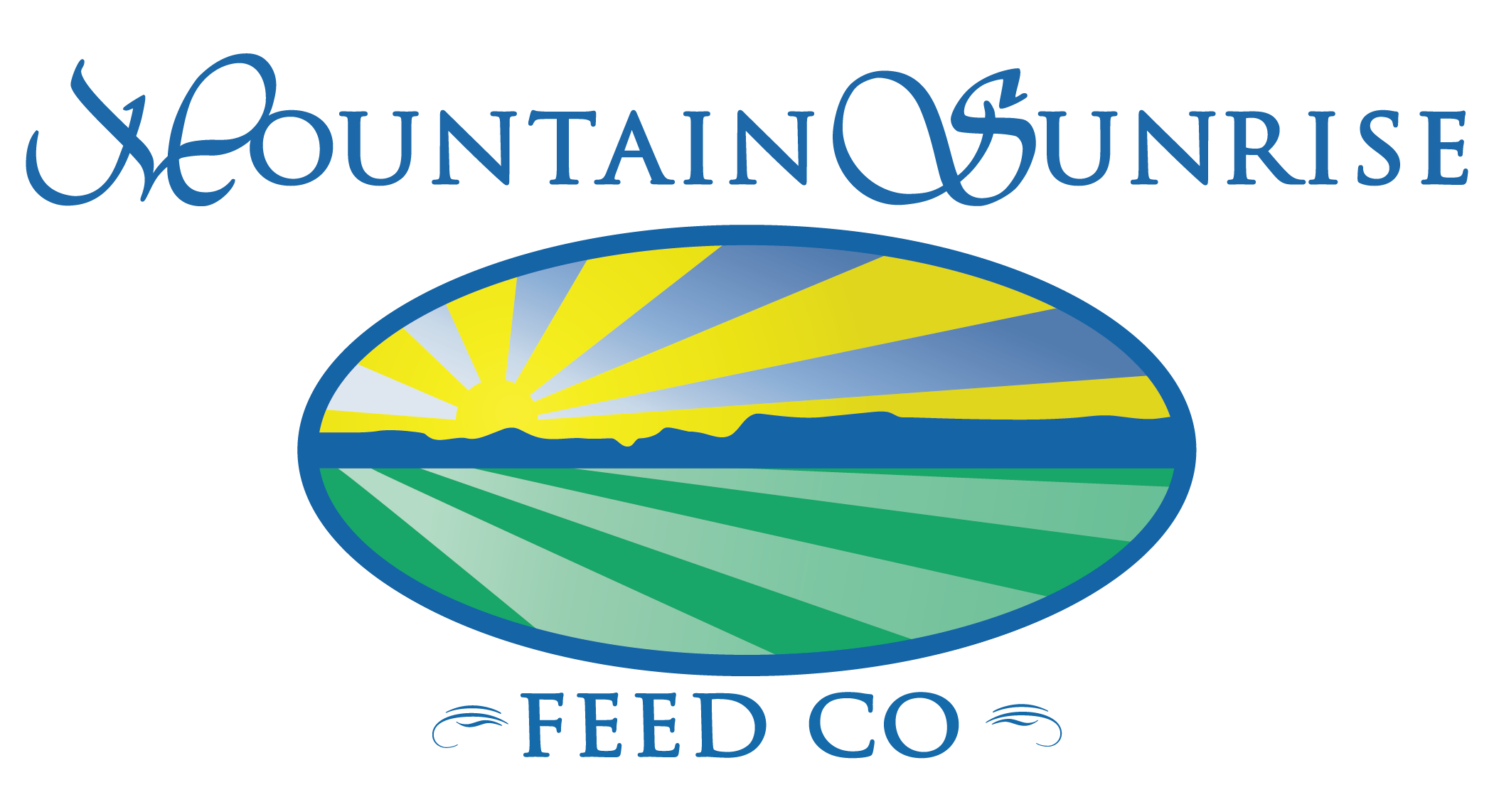FAQ
Q. Why does my horse need forage over grains such as barley, corn, wheat, and oats?
A. Horses are what is often call “hindgut fermenters”… About 65% of the horses’ digestive capacity is comprised of the hindgut consisting of the cecum and colon, where microorganisms work together to break down (ferment) plant fiber from forage. This horse’s unique digestive system is best suited for the utilization of forage.
Q. How much forage does my horse need?
A. Most horses require between 1.5% to 3% of their body weight in dry forage pellets per day, depending on their stage of life and activity level. A Mature horse will need 1.5-2 lbs per 100 lbs of body weight, whereas a growing horse, a pregnant or lactating mare requires 2-3 lbs per 100 lbs of body weight. Be sure to consult with your nutritionist or veterinarian with regard to your specific horses’ needs. Also, ensure that the horse has access to plenty of freshwater along with the forage pellets.
Q. I feed Mountain Sunrise pellets as a treat. Can I switch to Mountain Sunrise as the main feed?
A. Absolutely! Mountain Sunrise pellets are an ideal wholesome meal, balanced and healthy, with guaranteed nutrients at each feeding. Gradually replace existing hay with Mountain Sunrise pellets over a 7-10 day period. Replace existing hay on a 1 to 1 basis. Always provide free access to fresh, clean water.
Q. Is it easier to choke on a pellet than on hay?
A. Some horses are more prone to choking regardless of what they are being fed. If your horse tends to choke, wet the pellets prior to feeding and feed them in a wide shallow bucket or place a smooth large rock into the trough to prevent gorging large amounts in one mouthful.
Q. My horse eats pellets faster than hay, will it get bored with less to chew during the day?
A. Mountain Sunrise recommends using a slow feeder (or using a wide shallow bucket and placing a couple of smooth large rocks in it) or providing smaller meals more frequently. You might also want to provide a small amount of long-stemmed forage, perhaps one-half to one pound daily to keep your horse busy.
Q. Why does Mountain Sunrise Feed not use any binders or fillers in their pellets?
A. Unlike most forage pellets or cube mills, we don’t add any binders or fillers, such as bentonite, clay or molasses to our pellets. Bentonite and clay are essentially dirt and we don’t believe your horse should be eating it. So, why does the competition use those binders if it is not good for a horse? You’ll have to ask them, but typically those binders are required to hold together larger cubes and pellets so they don’t fall apart. That’s why we make only ¼ inch pellets and use a unique process that slowly steams the ground-up hay into a consistent, easy to handle, and digestible pellet.
Q. Why is Mountain Sunrise forage of such premium quality?
A. Our forage is grown in the western region of the U.S. mainly in Utah, Idaho, and parts of Colorado. The area has highly fertile soil, minimal humidity, low annual rainfall, but plenty of irrigation to create the perfect condition to grow the highest quality forage. Unlike other parts of the country where weather is highly unpredictable, leading to great variances in hay quality. Unlike other forage mills that grow their own hay, we work with multiple local farmers across the region to ensure we have constant access to only the best hay so we don’t have to only sell what we happened to produce that year, quality, or not.
Q. What is the difference between Alfalfa, Timothy, Orchard, and Bermuda hay?
A. There are mainly two common types of hays, legumes and grass hays. Timothy, Orchard, and Bermuda are a type of grass hay where Alfalfa is legume hay. Both crops can vary tremendously in quality, especially grass hays, depending, on the type, what location it’s grown, and at what particular stage it’s harvested. Legume hay such as Alfalfa will be higher in protein and calcium, while lower in phosphorus content compared to grass hay. Grass hay can be divided into warm and cool grass hays. Timothy and Orchard are cool grass hays whereas Bermuda is warm grass hay. The nutritional difference will greatly depend on the soil and weather conditions the grass was grown in, but overall cool grass hay will be slightly higher in protein than warm grass hay.
Q. I use a marked bucket to feed my horses. Can I use the same markings for all your products?
A: Each of our products has a different density and therefore will require a separate mark on your bucket to ensure the right amount of the product is fed. Please weigh the product and then mark your bucket specifically for each product.
Helpful Resources
http://www.thewayofhorses.com/06_13_grass_hay.html
http://www.thewayofhorses.com/05_13_alfalfa.html

